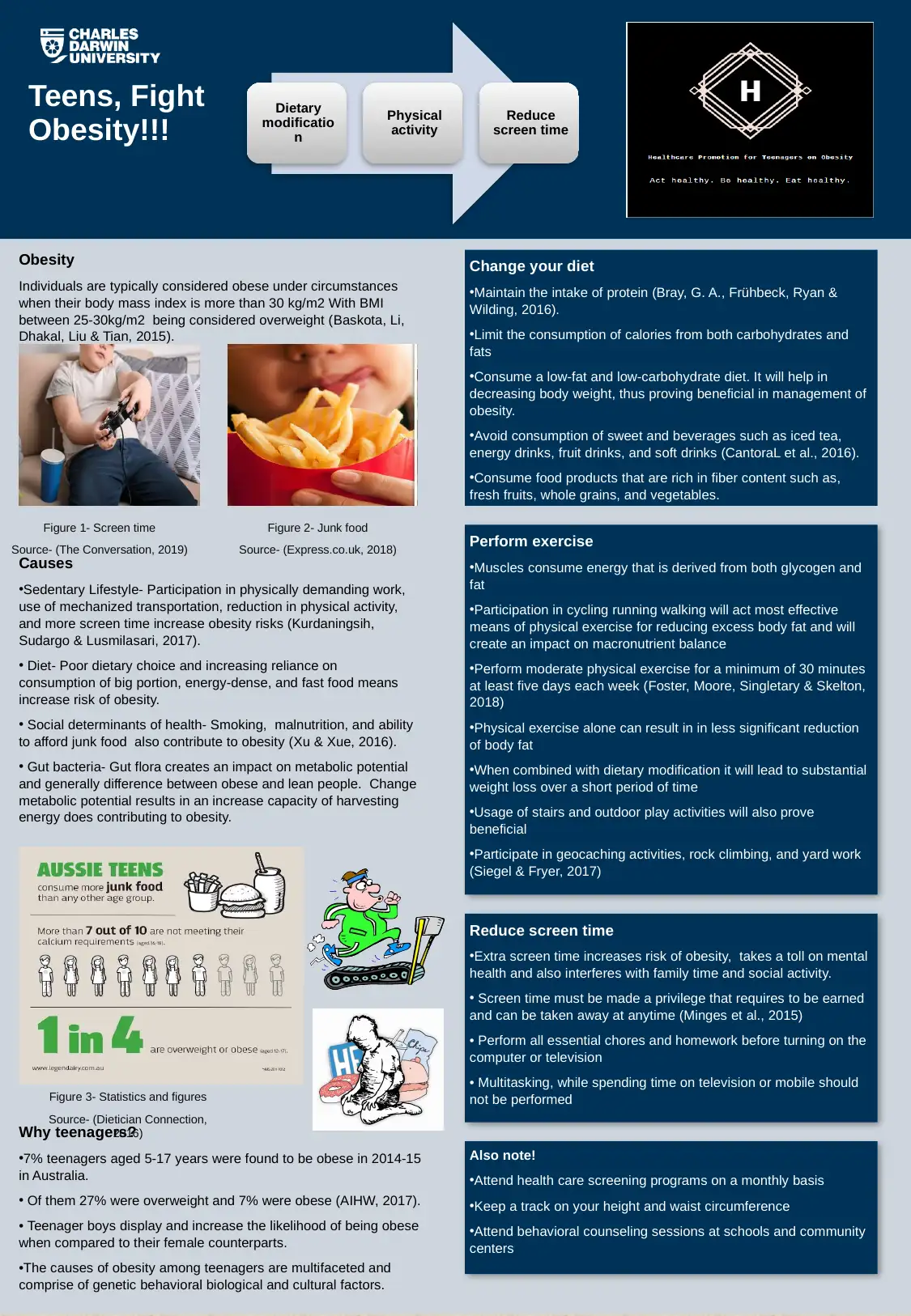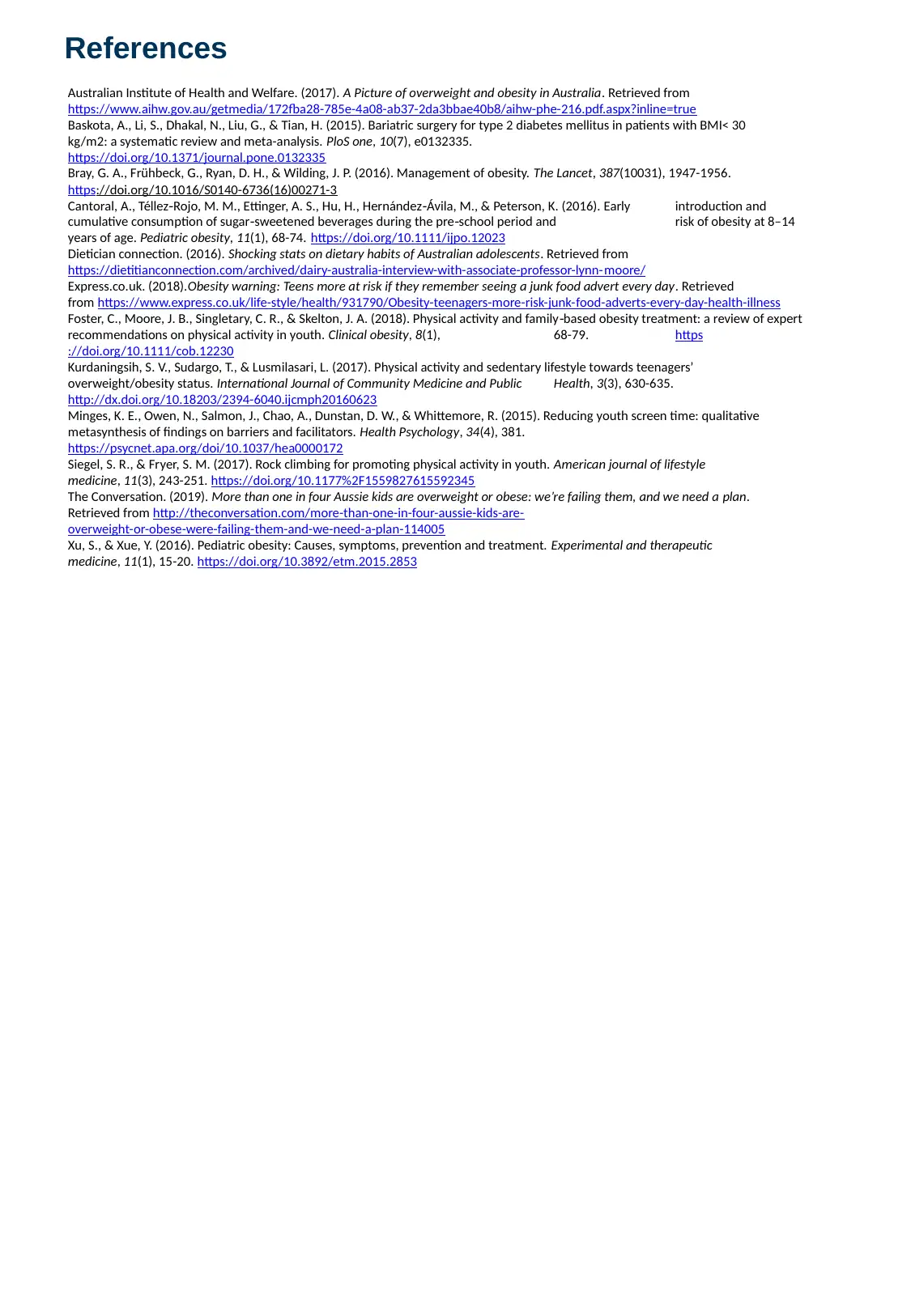Health Promotion Project: Addressing Obesity in Teenagers in Sydney
VerifiedAdded on 2022/12/12
|2
|1270
|352
Project
AI Summary
This project focuses on addressing the growing issue of obesity among teenagers, highlighting the importance of dietary modifications, increased physical activity, and reduced screen time. The assignment begins with an introduction to the current global health crisis, emphasizing the rising rates of obesity and its associated health risks, particularly among adolescents. The project outlines the causes of obesity, including sedentary lifestyles, poor dietary choices, and social determinants, and emphasizes the need for a multifaceted approach to prevention and intervention. The core recommendations include maintaining a balanced diet with a focus on protein intake, limiting calorie consumption from carbohydrates and fats, avoiding sugary beverages, and increasing the intake of fiber-rich foods. The project also stresses the importance of regular physical exercise, suggesting a minimum of 30 minutes of moderate activity at least five days a week, as well as reducing screen time and promoting alternative activities. The project also includes figures and statistics regarding obesity in teenagers, including the prevalence of overweight and obesity in Australia, and concludes by emphasizing the multifaceted nature of obesity and the need for a comprehensive approach to address it through behavioral counseling, healthcare screening programs, and lifestyle changes. The references include a list of relevant sources, including research articles and reports from health organizations.
1 out of 2


![[object Object]](/_next/static/media/star-bottom.7253800d.svg)